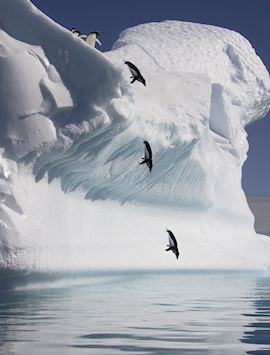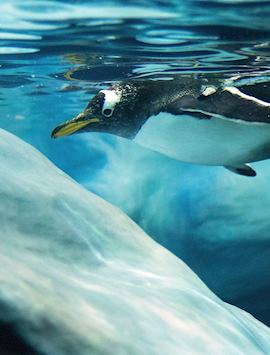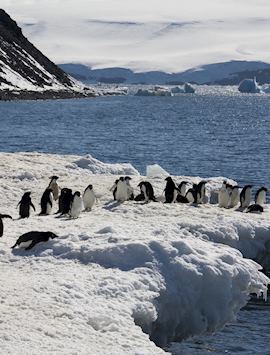By Polar specialists Lizzie, Fiona and Nik
Do you have, in the words of writer Jenny Diski, ‘an irrational desire to be at the bottom of the world in a land of ice and snow’? We know the feeling. The wildlife, the freight of Shackleton-Scott-Amundsen mythology, and the untouched landscapes draw people to Antarctica. Yet there’s something else, less easily quantifiable, that’s part of the Antarctic’s allure. Perhaps it’s a promise of true remoteness, or the chance to witness first-hand this immense, unknowable desert — Earth’s last real wilderness.
We’ll explain what you’ll experience on an expedition cruise to Antarctica, from the scenery and potential wildlife sightings to the day-to-day details of life on board. We also share our ideas for how to make the most of your time on the Great White Continent.
What does an expedition cruise to Antarctica involve? By Nik
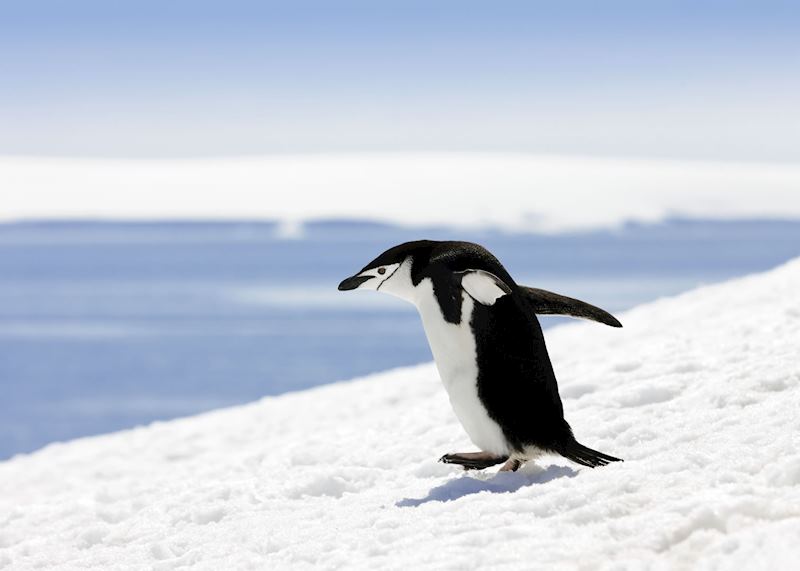
The word ‘cruise’ can be a bit misleading. Expedition cruises aren’t leisure cruises, but focus on giving passengers the means of dynamically experiencing and interacting with Antarctica’s ecosystem. You journey through the ice floes by Zodiacs (motor-powered dinghies), walk among penguin colonies, and observe your surroundings from the deck with the help of experienced expedition leaders. Each vessel has its own roster of guides, who are often specialists in areas such as geology, glaciology, polar history and Antarctic wildlife.
Vessels depart from Ushuaia, Argentina’s southernmost tip. After crossing Drake Passage, a notoriously rough stretch of ocean (which can, nonetheless, sometimes be as calm as a millpond), most ships head for the Gerlache Strait, just off the Antarctic Peninsula.
Schedules can and will change depending on weather conditions. Sea and pack ice can also cause impasses, in which case your captain will change course and take you to another area.
A typical day on board
You’re woken around 6am or 7am by an announcement over the speakers explaining your location and the weather conditions. After breakfast and a morning briefing on the day’s activities, you’ll change into your outdoor gear (the cold comes from the wind; on a still day it’s not cold at all), ready to disembark. Following the morning’s activity come lunch and a briefing on what the afternoon entails.
After dinner, or sometimes while journeying to the next destination, passengers congregate in the bar for a drink, and to hear presentations from guides. These sound formal, but they’re more like fireside chats. Think lectures on polar photography, a talk from a Shackleton expert, or a workshop on sketching polar scenery.
- Read more about a typical Polar day
What you’ll experience on an Antarctic expedition cruise, by Lizzie
Earth’s last real wilderness: Antarctica’s landscapes
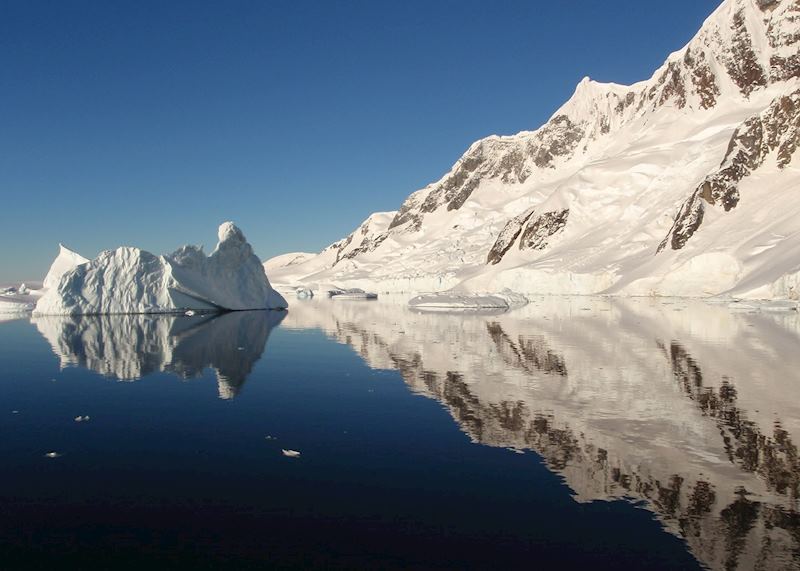
Unlike the early explorers in their tiny-masted boats, you already have an idea of what to expect from an Antarctica trip. Yet, you’ll still feel like an infinitesimal speck as mountains and glaciers tower over your boat. Some slopes have great plains of sastrugi — snow that has been eroded into great white waves to create a sea-like surface.
Huge blankets of snow, several layers deep, can make peaks look like badly iced cakes. Ice comes in a myriad of sculptural forms, and icebergs take on surreal, fantastical shapes. There’s the odd area clear from ice and snow — scrapes of pebbly beaches and muddy glacial moraines where penguins throng in their thousands.
Glaciers pour down mountain ridges to the water, which on still, sunny days becomes a perfect mirror. Only the ripples caused by a group of penguins make the mountain’s reflection in the water quiver and blur. The snow twinkles in bright sunshine.
I also like Antarctica’s moodier weather, when a gale begins to rail against your face and winds whip over the mountains, building from nothing to 100 knots in moments.
Ice: forms and hues
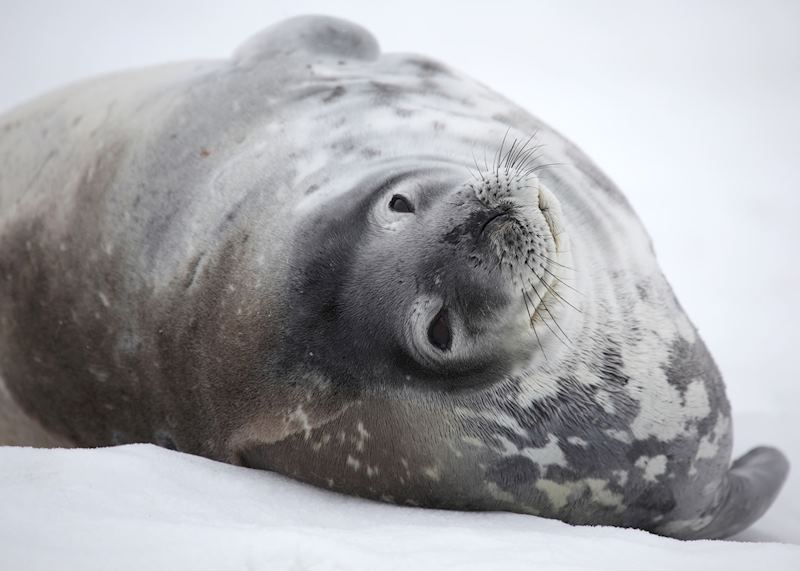
Observe the chunks of floating ice (called bergy bits), icebergs and ice islands, and you’ll see a variety of shapes, textures and blues. You’ll pass icebergs of bright cerulean or sea-green, a result of layers of snow compressed over time (the bluer the ice, the older it is). Sometimes, icebergs are streaked with earth, stolen from a moraine as they’ve broken free.
Look for archways and other ice formations. I once saw what resembled the vault of a cathedral nave, the penguins below it mere dots. Another formation reminded me of Roman columns.
You might see great slabs of sea ice and perhaps even brash ice (fragments of floating ice no wider than 2 m (6.6 ft)). Venturing into a patch of this stuff on a Zodiac is like being among small pieces of polished white glass. They make a tinkling sound like a wind chime.
It’s hard not to marvel at how the wildlife interacts with these landscapes. On one cruise, my group landed at a penguin colony on Half Moon Island, where we hiked to a vantage point on a ridge. Walking uphill in the snow was challenging, and I was quite amazed to see how the tiny penguins coped with the long ascent. They’d stick their beaks in and pull themselves up, sliding back down on their bellies.
Antarctica’s wildlife
Penguins, by Fiona
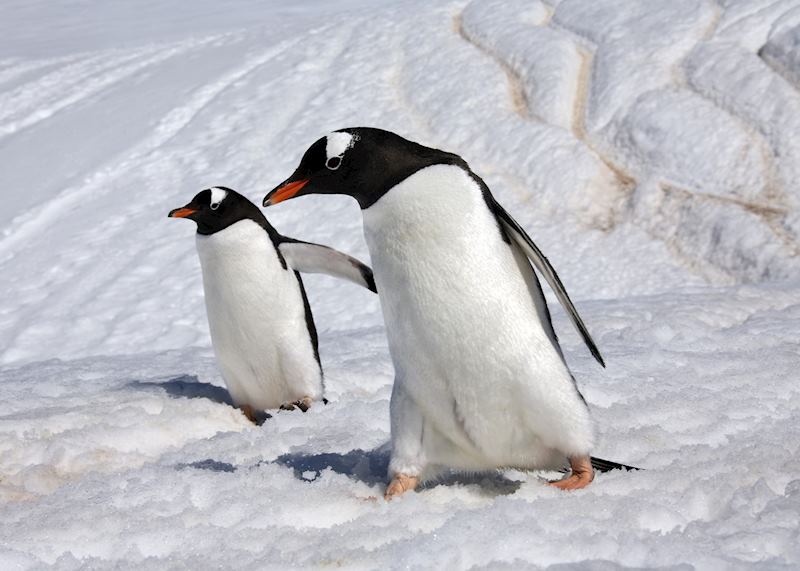
Penguins are your constant in Antarctica, whether you observe them from the deck, from a Zodiac, or on land — but they never get boring.
Being among a colony is sensory overload: the air is filled with the noise of the birds cawing at each other. Everywhere you turn, something new is happening. Some penguins are nursing eggs on their nests of pebbles; others are performing courtship rituals (a male offers his mate a small stone) or bowing to each other after a long parting.
Groups march along ‘penguin highways’ (worn paths used to journey to and from the water), waddling down slopes in lines. Some have starkly white breast plumage; others are splashed with mud. Skuas pose a continuous threat, circling to steal eggs, while penguins poke their beaks up in defiance.
At close quarters, you begin to see how the species differ. For example, Adélie penguins toboggan over the ice on their fronts, but the closely related gentoos and chinstraps don’t. Gentoos have large, orangey flippers; chinstraps dainty pink ones. Penguins’ feet, you’ll notice, are incredibly dexterous: they bend at strange angles, and can cling to rock tightly.
Sometimes, a penguin will hop over to inspect you. The Antarctic Treaty forbids visitors to go within 5 m (16 ft) of wildlife, but penguins — who have never had any land predators — regularly flout this rule.
We’ve a tendency to find penguins comical, with their uneven gait and stocky little bodies, but the first time you see them in the water, streaking like arrows, you’ll see how agile they are.
I once saw a mass penguin homecoming. As I watched from my spot on a shingle beach, thousands of them came porpoising through the water, springing up onto land. The population of the colony swelled in minutes.
Seals and whales, by Nik
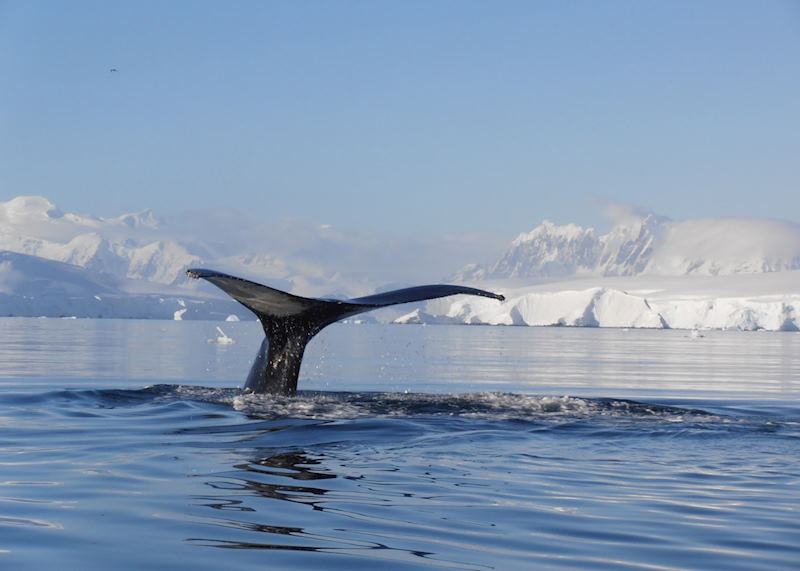
Antarctica is home to several seal species, and you don’t need to make a dry landing to see them. I’ve kayaked past solitary, menacingly powerful leopard seals, as well as fatter, docile Weddell seals and clusters of sociable crabeater seals. There are elephant seals, too, with their harems and pups. You can identify the young males from their play-fighting and scrapping.
Whales arrive in Antarctica between January and March to feed on krill. Species you might see include fin, humpback, minke, orca and blue whales. Most of your sightings will be from the deck of your ship: whales may come to check out the vessel. It’s difficult to be specific about whale sightings — you never know when or if they’re going to occur — but the clarity of the water does make it much easier to track the whales’ movements.
Human Antarctica: research stations and historic sites, by Lizzie
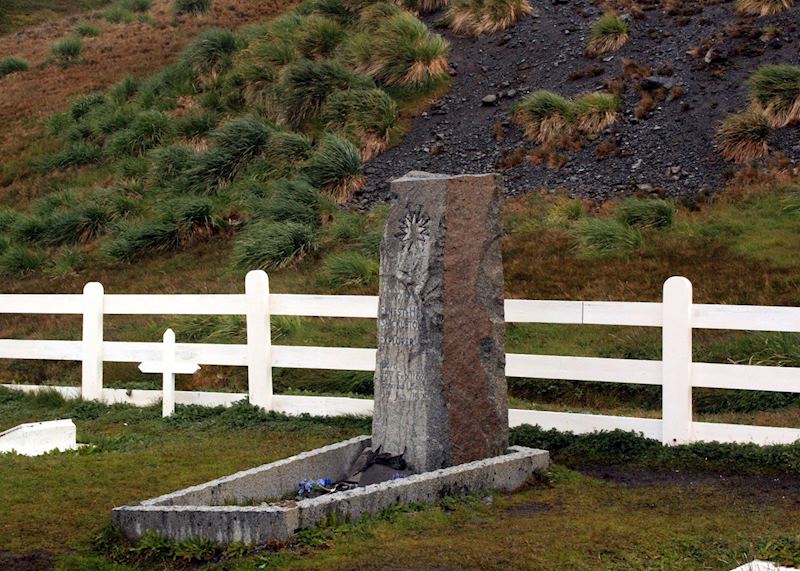
Visitors sometimes forget about Antarctica’s human face, yet there’s a lot more to this aspect of the Antarctic than the novelty of sending a postcard from the post office at Port Lockroy.
At Deception Island, a craggy caldera half swallowed by the ocean (allegedly the inspiration for Jules Verne’s sunken crater island in Journey to the Centre of the Earth), you’ll see the vestiges of the whaling station that only petered out in the 60s. The rusting skeletons of buildings and old boats, vast vats used for blubber, and even a whalers’ graveyard remain. If your expedition cruise includes a stop in South Georgia, you’ll witness the remnants of an even bigger whaling station at Grytviken.
Vessels will try and stop at a research station, where you can meet scientists currently living and working there, and learn about their projects.
If you’re interested in Shackleton, and the mystique of the first explorers, consider including a trip to South Georgia. It’s here ‘the Boss’ completed his epic traverse of the island as part of his 1917 rescue mission.
Adventure activities, by Nik
Kayaking
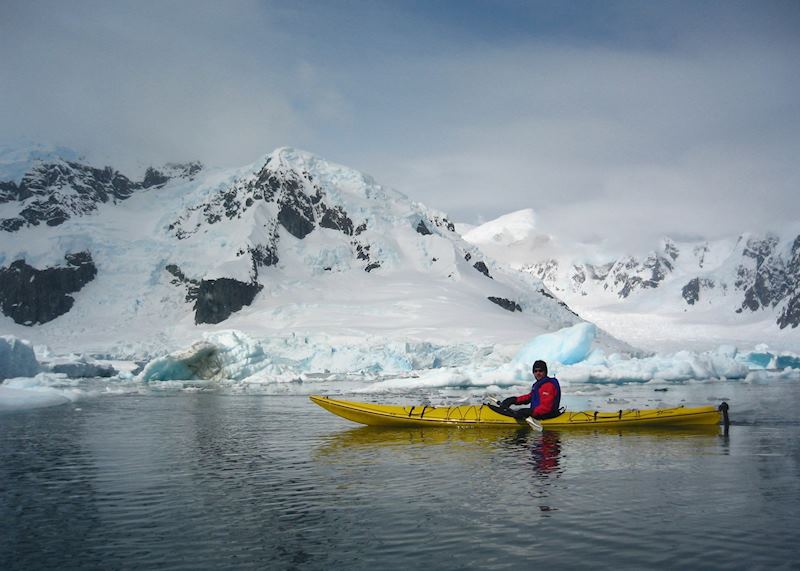
Many vessels offer kayaking. Prior experience is sometimes required, depending on your ship. It means, weather permitting, you have the chance to go kayaking instead of cruising in a Zodiac.
Kayaking has been the highlight of my time in Antarctica. For one, you head in the opposite direction to the Zodiacs. Away from their motors, it’s soon completely quiet and still. You get a much greater sense of just how pristine this place is, the silence broken only by the gentle lapping sound of paddles.
I’ve also had the fun of kayaking between Neptune’s Bellows, an impossibly thin gap in the ring of rock making up the collapsed crater of Deception Island. The waters surrounding it conceal the wrecks of ships that misjudged the width of the opening.
The main advantage of kayaking, however, is it can get you a closer view of wildlife. I’ve glided past groups of seals, including a leopard seal sprawling its long, sleek muscular body across a bergy bit. One day, I was incredibly lucky: a young, inquisitive minke whale came and spent 20 minutes swimming underneath our kayaks, spyhopping and snorting out spray. I could see right into its eyes and watch its progression through the piercingly clear water.

The polar plunge
Although several adventure options exist — from snowshoeing to camping on the ice overnight — one that’s rather fun is the chance to peel off your many layers and run into the sea (usually at Deception Island). It’s not bathwater by any means but, thanks to that island’s geothermal activity, it’s not quite as glacial as you’d expect.
Making the most out of your time in Antarctica: our tips
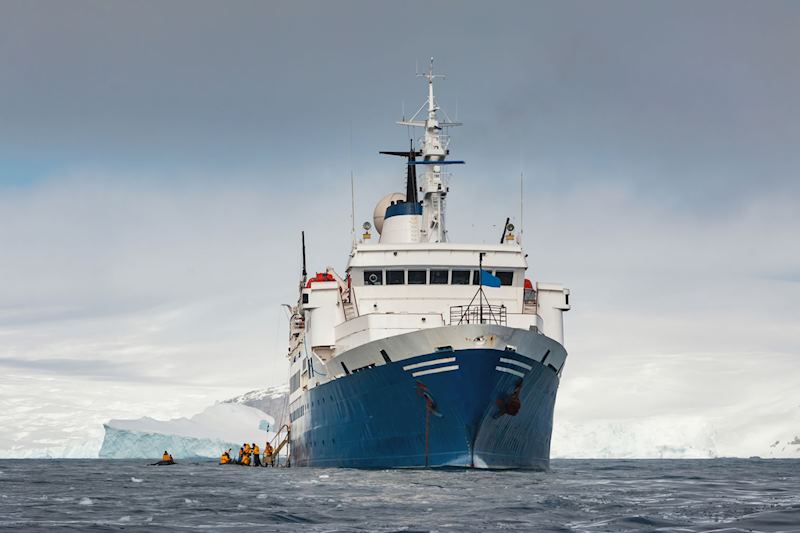
Be prepared to spend a lot of time at sea, and go out on deck, by Nik
If you’re traversing Drake Passage, you’ll gaze out at an endless-seeming, apparently uninhabitable ocean. However, it’s actually a chance to see birdlife — wandering albatrosses, which may have been out at sea for years, inevitably swoop around the ship.
You may also see cape petrels, with their distinctive black and white plumage. It’s somehow comforting that, in this ocean at the end of the world, there are these hardy species. You might find yourself skulking around the stern, trying to capture that perfect shot of a bird in flight.
Go to as many talks as you can, by Fiona
Among all the lectures I’ve attended, one that really appealed to my sense of adventure was a talk by a chef who had overwintered at an Antarctic research station. He told us of coping with six months of darkness, and how, on his days off, he’d abseil to observe penguins.
There's no such thing as an itinerary, and that's no bad thing, by Lizzie
As mentioned earlier, expect the plan to change. On one trip, our final landing was called off. Everyone was glum until, as we were sailing, two humpback whales appeared and began to interact playfully with the ship. They were spyhopping, showing off their fins, swimming under the boat and popping up again — probably teasing us. So, if a planned disembarkation is cancelled, don’t be disheartened: keep an open mind.
Practicalities
- Some expedition cruises also visit South Georgia and the Falkland Islands. Though not strictly polar, South Georgia has colonies of king penguins, wind-whipped expanses of tussock grassland, vast mountains and glaciers, and abandoned whaling stations. The Falklands is home to colonies of rockhopper penguins. Many Chileans live there and, though it’s UK territory, it has its own accent and currency.
- It’s possible to fly to the South Shetland Islands and meet your vessel there, cutting out Drake Passage. However, bear in mind that flights can be cancelled due to weather conditions.
- Vessels differ in size and facilities. Audley works with smaller expedition vessels (199 passengers or fewer) that, unlike larger cruise ships, offer specialist guiding and as many disembarkations as possible. Please see our guide for more information on individual vessels.
Start planning your Antarctic cruise
Start thinking about your experience. These itineraries are simply suggestions for how you could enjoy some of the same experiences as our specialists. They're just for inspiration, because your trip will be created around your particular tastes.
View All Tours in Antarctica
